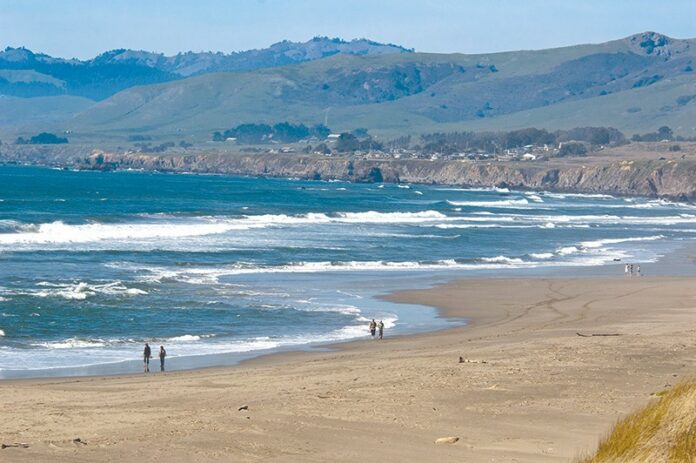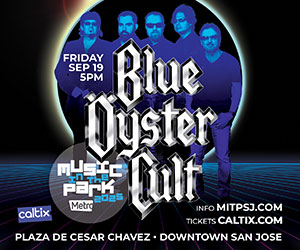Sonoma County leaders like Supervisor Efren Carrillo have made no bones about their opposition to a California State Parks–driven move to charge for beach access at parks up and down the coast.
It’s an issue that has roiled North Bay coastal groups and humble beach lovers, especially in coastal Sonoma County, home to numerous beaches managed by the state, and home to a significant number of souls of lesser means looking for some fun and sun in the surf.
Carrillo was the Sonoma County point person who tried to put the brakes on a State Parks proposed $8 parking fee during a California Coastal Commission hearing last month in San Rafael. That effort failed. The hearing was held to adjudicate a fight between the county and the state over jurisdiction of the beaches, and the commission’s vote wrested the issue from the county’s clutches.
In a nutshell, Carrillo and others told the commission that Sonoma County should have jurisdiction over beaches and access thereto, under the Sonoma County Local Coastal Plan and the California Coastal Act of 1976, which encoded the template for universal access to California beaches. Carrillo notes that many Californians believe that unencumbered beach access is a right, not an entitlement.
Carrillo counts himself among them, though according to a report in the Press Democrat, he acknowledged that there are county beaches that charge a fee—the supervisors, he says, are looking to abolish those too. The PD also reported, stunningly, that out of 880 public comments about the state proposal, first unveiled in 2013, a total of two were in favor of the fees.
The Coastal Commission gave a clear indication of the controversy over the proposed fees when it voted 6–6 on the State Parks plan, which would see so-called Iron Ranger self-pay stations plunked down at the gateway to 14 beaches that are now free and open to the public.
Unfortunately for beach lovers of lesser means, the tie goes to the appellant, in this case State Parks. The vote set the stage for possible future fees.
The split vote also told a story of its own. Class issues don’t get any rawer than this one in a county with skyrocketing rents, wages that can’t keep up and lots of backbreaking work to be done in the fields and farms of Sonoma County. Under the State Parks plan, people of lesser means would get the squeeze on their relaxation budget, while the view from that fancy hillside vacation home is just fine, thanks, and that private pathway to the beach is free.
“There are significant disparities, even in a county like this with so much abundance,” says Carrillo. He further notes that the particularities of the Sonoma Coastline present their own impediments to access, owing to geography more than fees. You basically need a car to access the beaches in the first place. That’s not the case in places like, say, Venice Beach in Los Angeles.
“One of my main arguments to the Coastal Commission,” says Carrillo, “was specifically around the premise of families of lesser means having to turn around in their cars and not have access to the coast. We are trying to ensure as best we can that there is universal access, particularly for those families that don’t have the means.”
Carrillo points to a county report from late last year that identified family incomes as low as $14,000 a year in Rohnert Park. That’s called “living in poverty,” in case there’s any confusion about how far $14k will take you in Sonoma County.
But there’s hope, maybe. Carrillo says that since the Coastal Commission vote, State Parks appeared to have gotten a message about the unpopularity of its proposed move, and the promised backlash in the form of class war in the sands, with seething surfers at the vanguard.
Carrillo credits the Coastal Commission for committing to a transparent process as it weighed the merits of the state’s argument over jurisdiction. That very transparency may have piqued the conscience, if not the political considerations, of State Parks bureaucrats. They reached out to Carrillo after the meeting to see if there wasn’t a way through the fee fandango.
“My understanding is that they didn’t necessarily have to open [the meeting] to the public,” says Carrillo as he recounts the blow-by-blow account. “There was a lot of public input and many people who certainly made very, very strong points that supported the county’s position.”
Since the vote, Carrillo says, “we’ve been contacted by State Parks to sit down and confer, and I’m certainly open to and receptive to sitting down with them. I can’t tell you with certainty what that means, but they have reached out and we’ve responded.”
Carrillo says that in the meantime he’ll reach out to organizations such as Coastwalk California and the Surfrider Foundation to make sure they’re in the loop on any further discussion about beach fees. Those organizations have vociferously advocated for unencumbered access.

















